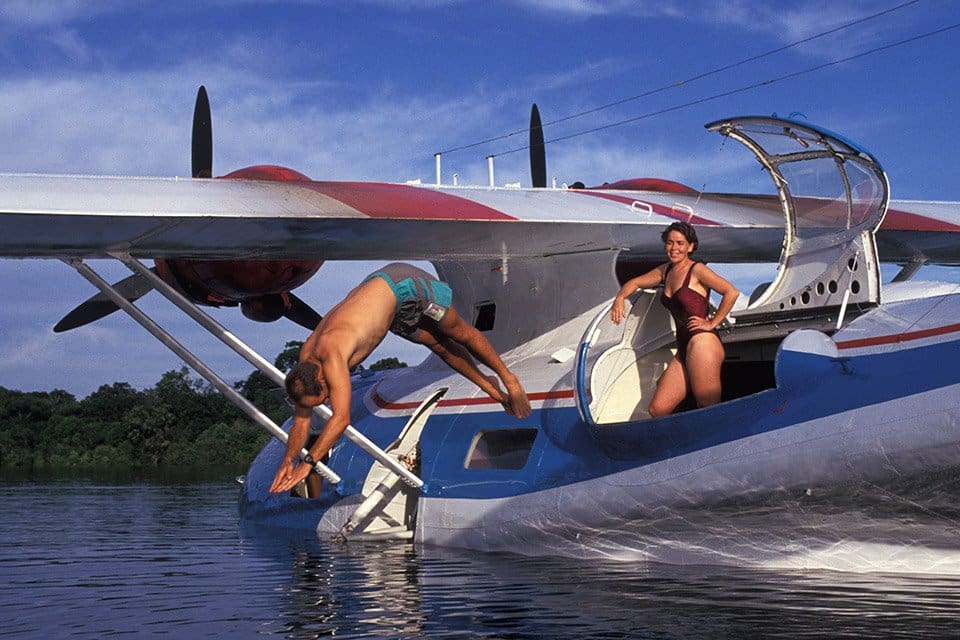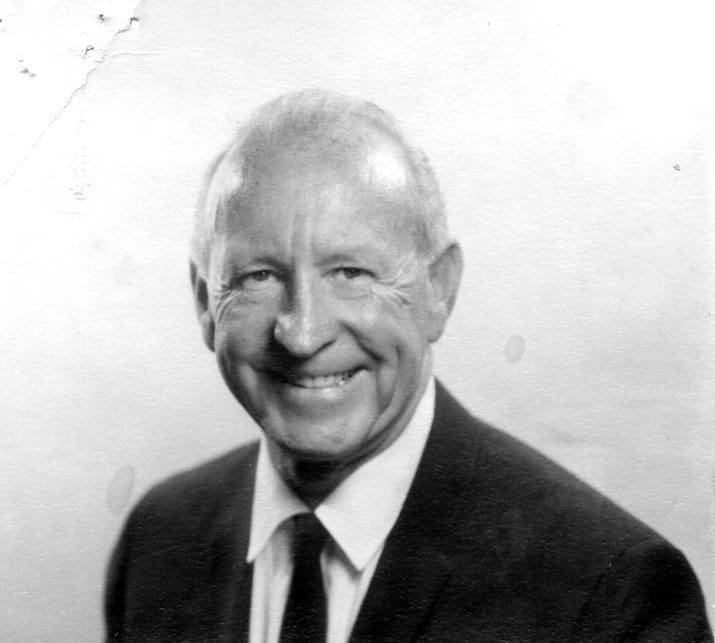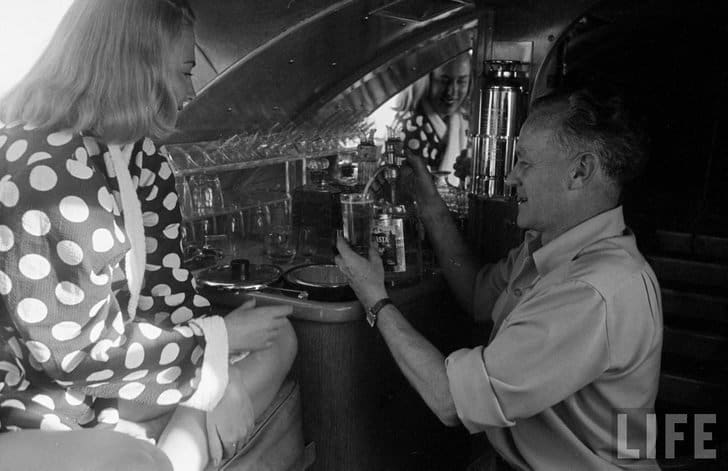In the early 1950s, American businessman Thomas Kendall embarked on an ambitious and highly publicised around-the-world journey with his family in a custom-built luxury vehicle known as the Landseaire.
This journey was designed not only as a unique family vacation but also as a marketing spectacle—an attempt to demonstrate the capabilities of modern vehicles, promote American products, and capture public imagination in the postwar age of consumer innovation and global curiosity.
The man behind the journey: Thomas Kendall
Thomas Kendall was a wealthy entrepreneur from California, known for his involvement in the automotive and hospitality industries. By the early 1950s, Kendall had become fascinated by the idea of a self-contained luxury vehicle that could serve both as transportation and living quarters. He commissioned the construction of the Landseaire, a converted 1951 Cadillac ambulance chassis transformed into a motorhome, years before the RV craze would truly take off in America.
Kendall’s vision was bold: he would take his family on a round-the-world journey in the Landseaire, showcasing both American ingenuity and modern postwar affluence. This journey would not only serve as a vacation for his family but as a mobile advertisement for U.S. engineering, lifestyle, and optimism in the Atomic Age.
Introducing the Landseaire
The Landseaire was no ordinary vehicle. Built by the Meteor Motor Car Company, it was essentially a Cadillac on steroids. Outfitted with air conditioning, a refrigerator, a television set, a two-way radio, a kitchen, and even a shower and bathroom, it was a marvel of mid-century engineering and comfort. The interior featured plush leather seating, Formica countertops, and futuristic lighting—bringing all the comforts of home to the road.
Painted in shining chrome and polished black, the Landseaire turned heads wherever it went. Its creators intended it to showcase a future of comfortable long-distance travel, symbolising postwar America’s technological prowess and consumer confidence.
The Kendall Family: Adventurers on the move
Joining Thomas Kendall on this journey were his wife, his children, and their faithful family dog. The family’s close-knit nature and adventurous spirit were key elements of the story that media outlets were eager to cover. The Kendalls represented the idealised American family of the 1950s: wholesome, curious, and brimming with enthusiasm.
They travelled with a planned route that would cover much of Europe, the Middle East, parts of Asia, and back through the Americas, utilising both overland travel and shipping logistics to move the Landseaire between continents. At each stop, they would set up camp, mingle with locals, and give interviews to local and international press.
LIFE Magazine joins the trip
To ensure the adventure had proper media coverage, LIFE magazine assigned a photographer and correspondent to follow the Kendalls for portions of the trip. LIFE, then one of the most influential magazines in the U.S., saw the story as a compelling blend of human interest, innovation, and international exploration.
Photographs taken during the journey showed the Landseaire parked in front of iconic landmarks, the family preparing meals roadside, and curious locals examining the American marvel. These images helped capture the imagination of LIFE’s readership and added a layer of glamour and romance to the idea of cross-continental travel.
Cultural curiosity and American promotion
In many ways, Kendall’s expedition was a soft-power promotional mission. The Landseaire was adorned with U.S. branding and served as a rolling advertisement for American products. At a time when the United States was establishing its postwar global presence, trips like these functioned as cultural outreach—demonstrating American affluence, innovation, and family values in faraway lands.
In cities like Paris, Istanbul, Tehran, and Bombay (now Mumbai), the family attracted local press and curious onlookers. People marvelled at the vehicle’s size and amenities, and Kendall often gave tours of the Landseaire to locals and dignitaries alike.
Logistical challenges and diplomatic delays
Despite its optimistic intentions, the journey was not without serious complications. Transporting such a large, heavy vehicle across different terrains and infrastructures was often difficult. In some places, roads were inadequate or non-existent, and the Landseaire had to be ferried or shipped to the next destination.
Border crossings presented further complications. Customs officials were often baffled by the mobile home and its array of appliances, and political sensitivities—especially in Cold War-era Eastern Europe and the Middle East—meant the family occasionally faced delays, red tape, and scrutiny.
Mechanical issues on the road
The Landseaire, while advanced for its time, was not immune to mechanical trouble. At various points in the journey, the vehicle suffered from overheating, broken components, and general wear-and-tear from the thousands of miles traveled. Thomas Kendall, though not a mechanic by trade, had to learn to manage these issues—sometimes calling in local assistance, sometimes improvising repairs himself.
The vehicle’s weight and dimensions also proved challenging in regions with narrow roads, weak bridges, or limited access to fuel or spare parts. These mechanical issues slowed the pace of the journey and created tension among the family and support team.
Media fatigue and waning public interest
Though initially a media sensation, interest in the trip began to wane as the months dragged on and the novelty faded. LIFE magazine eventually reduced its coverage, and the family grew tired of constant attention and the pressures of performing American optimism in every town and city.
The original plan had been to complete a full circumnavigation of the globe, but eventually, due to a combination of logistical, financial, and personal factors, the trip was cut short. The Landseaire was shipped back to the U.S., and the family returned home with a treasure trove of memories, photographs, and tales—but without quite completing the full global route.
Legacy of the Landseaire journey
Though the full mission was not completed, the trip left a lasting impression. It captured a moment in time when Americans were encouraged to dream big, explore the world, and promote their way of life abroad. For many who read about the journey or saw photographs in LIFE, the Landseaire symbolised freedom, possibility, and a bold new era of mobile living.
The Landseaire itself remained a legendary artifact in motorhome and travel history circles. For years, it was exhibited at automotive shows and museums, admired for its design and the ambition it embodied. It helped spark greater interest in RV travel and influenced designs for future motorhomes.
Conclusion
Thomas Kendall’s Landseaire journey was a fascinating collision of family vacation, product demonstration, and cultural diplomacy. While it fell short of its full global ambitions, the trip was an iconic episode in mid-century American history—part travelogue, part marketing stunt, and part dream. Decades later, it remains a vivid example of how one family’s journey captured the spirit of its age, where chrome met curiosity and the open road stretched across continents.






















Leave a Reply